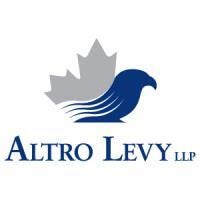Whether you own Cross-Border assets or not, when dealing with the transfer of assets to a disabled beneficiary who is resident in Ontario, special planning may be needed to preserve your disabled beneficiary’s entitlement to certain benefits he or she may be receiving, or may be entitled to receive in future.
The Ontario Disability Support Program (“ODSP”) is a provincial program offering income and employment support to adults with physical and/or mental disabilities.
An eligible applicant must show financial need, which is determined by calculating the assets held by such applicant. A single adult is entitled to hold up to $5,000 worth of assets. If he or she has a spouse (whether married or common-law), the limit rises to $7,500. The limit increases by $500 for each dependent child living with the disabled beneficiary.
Certain assets are exempt from counting toward the asset limit, including, but not limited to, an interest in a principal residence, a car and a prepaid funeral. Other assets may be exempt up to certain limits or as determined by specified rules.
For instance, an interest in a second property, such as a cottage or vacation property in Florida, may be exempt if it can be shown that the property is an asset necessary for the health and well-being of the ODSP applicant. If the second property is not exempt, the owner may not be eligible for ODSP benefits. Where this is so, the property will be exempt for only 6-months, during which time the property would be expected to be sold. If reasonable efforts to sell the property fail to produce a bona fide purchaser, the property may remain exempt until such time as the property is sold, provided that reasonable efforts to sell are maintained. Following the sale, attention must be paid to structuring the holding of the proceeds of sale in order to ensure such proceeds do not put the ODSP recipient offside of the asset limitations.
The ODSP regulations are complex, with many restrictions, of which the consequence of breaking may be ineligibility or permanent loss of ODSP income benefits. Some of the notable restrictions include limitations on ownership of assets above the thresholds outlined above as well as asset class. For instance, an ODSP recipient is restricted from owning more than $100,000, in aggregate, of life insurance (cash value), segregated funds (similar to a mutual fund but offered only by insurance companies) and any inheritance, whether received outright or held in trust for the recipient’s benefit.
You might ask why go through the trouble of trying to protect such income benefits when you plan to leave your disabled beneficiary much more than what he or she would receive from ODSP? Although ODSP provides financial benefit to your disabled beneficiary, there are also social programs, such as employment assistance, that may be lost. Such programs can be valuable to disabled persons of all financial backgrounds.
A special type of trust, referred to as a “Henson Trust” (named after the precedent-setting Ontario Court of Appeal case: The Director of the Income Maintenance Branch of the Ministry of Community and Social Services v. Henson, 36 Estates and Trusts Reporter 192, and also referred to as an absolute discretionary trust), may alleviate many of the foregoing issues.
Where drafted appropriately, a Henson Trust provides a means to leave unlimited assets to a disabled beneficiary without jeopardizing the benefits he or she may receive from ODSP or other government sources, both financial and otherwise. In other words, your disabled beneficiary can benefit from the substantial inheritance you may leave in such Henson Trust for his or her benefit, while continuing to collect the financial (and other) benefits available pursuant to the ODSP.
Whether a Henson Trust is an appropriate structure requires some fact gathering and analysis, coupled with a consideration of whether the beneficiary is disabled but has capacity, versus disabled but does not have capacity. In the case of the former, a trust structure may not be ideal where the beneficiary manages or is involved in managing his or her own finances. Further, where a Henson Trust is implemented, selection of one or more trustees to administer the trust is critical as there is a greater potential for abuse than in non-Henson Trusts.
Consideration should also be given to whether to utilize the federal government’s Registered Disability Savings Plan (“RDSP”), a registered matched savings plan for people with disabilities. An RDSP may be used in conjunction with a Henson Trust or on its own.




 />i
/>i
